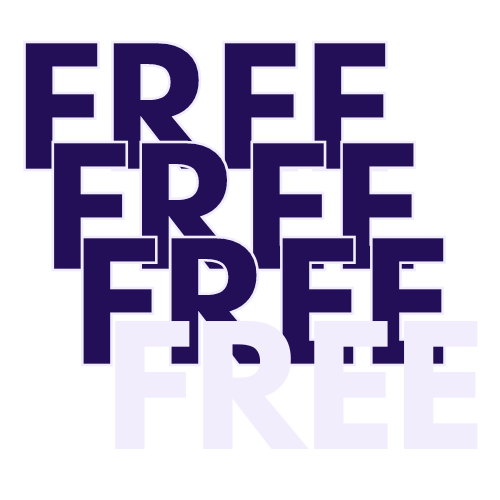
Balancing Cost and Quality: The Engineer’s Guide to Optimized Streaming
Key Takeaways
- Understanding the primary components that contribute to streaming costs: bandwidth consumption, encoding and transcoding, and storage.
- Identifying the key quality metrics that directly impact viewer retention and satisfaction: video resolution, bitrate, latency, and buffering ratio.
- Recognizing the trade-offs between cost and quality in streaming: balancing higher quality streams that require more resources with lower bitrates that may compromise the viewing experience.
- Appreciating the role of CDN in maintaining application performance and user experience, thereby eliminating the need for multi-datacenter deployment.
Welcome to this guide to optimized streaming for engineers, where we delve deep into the intricacies of balancing cost and quality. In the realm of video streaming, the line between cost effectiveness and quality is a fine one, and understanding how to walk it is crucial for success. This is especially relevant in an age where user expectations are sky-high and tolerance for poor quality is at an all-time low. So, let’s take a closer look at the components contributing to streaming costs, key quality metrics, the inevitable trade-offs, and the role of content delivery networks (CDNs). This guide provides actionable insights for engineers, technical CDN buyers, and other professionals looking to optimize their streaming operations.
Understanding the Cost-Quality Spectrum
Video streaming operations comprise a range of costs, key among them being bandwidth consumption, encoding and transcoding, and storage. Bandwidth consumption relates to CDN data transfer fees, which are based on the volume of data delivered to viewers. Encoding and transcoding, on the other hand, refer to the computational resources required to convert and compress video files into streamable formats. Lastly, storage expenses are associated with storing the original and encoded video files.
Along with costs, it’s equally important to understand the key quality metrics that impact viewer retention and satisfaction. These include video resolution, bitrate, latency, and buffering ratio. Higher resolutions like 4K and 1080p provide clearer visuals but demand more bandwidth. Bitrate, the amount of data transmitted per second, can affect video quality and buffering. Latency, the delay between the video source and the viewer’s screen, is crucial for live streaming. And the buffering ratio, the proportion of time viewers spend waiting for video to load, can lead to frustration if too high.
Now, let’s talk about trade-offs. Achieving higher quality streams, especially in 4K, requires more bandwidth and storage, which in turn increases costs. On the other hand, lower bitrates reduce costs but may result in pixelation or artifacts, degrading the viewing experience. Moreover, insufficient CDN capacity can lead to increased latency and buffering, compromising quality to save costs.
A pertinent fact to consider here is that a large proportion of the total size of the content in a web application is often static. Using a CDN can help maintain performance and overall user experience while eliminating the requirement to deploy the application to multiple datacenters.
Unlocking the Power of Key Technologies
As we navigate the cost-quality spectrum in our guide to optimized streaming for engineers, it’s essential to understand the role of key technologies in this space. These technologies help us dynamically adjust video quality, leverage AI-driven optimizations, and fine-tune video encoding settings to strike a balance between quality and file size.
Embracing Adaptive Bitrate (ABR) Streaming
Adaptive bitrate (ABR) streaming is a powerful technology that dynamically adjusts video quality based on the viewer’s network conditions and device capabilities. With ABR, you can create multiple versions of each video at different bitrates and resolutions. ABR algorithms then select the optimal video stream for each viewer in real-time. This approach allows you to balance cost and quality by delivering the highest quality stream that the viewer’s network can support without buffering.
Leveraging AI-Driven Optimizations
Artificial Intelligence (AI) has revolutionized many facets of technology, and video streaming is no exception. By leveraging AI-driven optimizations, you can enhance streaming performance while reducing costs. Machine learning algorithms can predict viewer behavior and preload video segments, thereby reducing latency. You can also utilize AI-powered video compression techniques to maintain quality while minimizing bandwidth usage. Additionally, dynamic CDN selection based on real-time network conditions and cost factors can further optimize your streaming strategy.
Optimizing Video Encoding Settings
Video encoding settings play a pivotal role in achieving the desired balance between quality and file size. By choosing appropriate codecs (e.g., H.264, HEVC) that offer high compression efficiency without sacrificing visual quality, you can ensure optimal streaming. Further, you can fine-tune encoding parameters such as bitrate, resolution, and frame rate to achieve the desired quality-to-size ratio. Employing perceptual quality metrics (e.g., VMAF) can also help you assess the perceived visual quality of encoded videos objectively.
As the low-latency video streaming protocols insightfully points out, these technologies come together to save us the headache of figuring out the best way through this technical obstacle course. By making strategic use of key technologies, you can bring your vision to life, all while avoiding the pitfalls of the modern equivalent of dial-up internet.
Navigating Cost-Quality Trade-offs for Optimized Streaming
In our guide to optimized streaming for engineers, understanding the intricate balance between cost and quality is essential. The trade-offs between the two factors necessitate careful deliberation and strategic planning. Let’s delve into how these trade-offs can be managed to achieve high-quality, cost-effective streaming.
Understanding the Bitrate-Quality Relationship
The relationship between bitrate and perceived video quality is a critical aspect of streaming optimization. To accurately assess this relationship, you can conduct subjective viewer tests to determine the minimum acceptable bitrate for each content type and genre. Analyzing viewer engagement metrics, such as watch time and dropout rate, can help identify bitrate thresholds that maintain viewer satisfaction. To provide a range of quality options while minimizing bandwidth costs, optimizing bitrate ladders is a proven strategy.
Assessing the Impact of Video Resolution
Video resolution significantly impacts both viewer perception and streaming costs. When selecting resolutions to support, it’s crucial to consider the viewing devices and screen sizes of your target audience. Evaluating the incremental cost of delivering higher resolutions against the potential improvement in viewer experience provides key insights. Implementing resolution-based pricing tiers is an effective way to align costs with the value provided to viewers.
Avoiding Overprovisioning of Resources
Overprovisioning resources can lead to unnecessary costs without necessarily improving the quality of experience. Regularly monitoring and analyzing resource utilization can help you identify areas of overprovisioning. By utilizing auto-scaling techniques, you can dynamically adjust resources based on real-time demand, reducing waste and costs. Implementing caching mechanisms to serve frequently accessed content from memory can help minimize redundant processing and bandwidth consumption, further optimizing the cost-quality balance.
In the challenging landscape of video streaming, making informed cost-quality trade-offs contributes significantly to delivering a superior viewer experience without breaking the bank. By leveraging these strategies, engineers can successfully navigate the complexities of optimized streaming.
Engineer’s Toolkit: Streaming for Optimal Performance
While understanding cost-quality trade-offs is crucial, having the right toolkit at your disposal can simplify the process of achieving optimized streaming. A combination of open-source tools, cloud-based services, and automated testing frameworks can significantly enhance streaming cost and Quality of Experience (QoE). Let’s unpack these toolkits:
Optimizing Streaming with Open-Source Tools
Open-source tools provide a cost-effective way for engineers to analyze and optimize streaming performance. FFmpeg is a dynamic multimedia framework that excels in encoding, decoding, and manipulating video and audio files. VMAF (Video Multi-Method Assessment Fusion), developed by Netflix, is an exceptional tool for objectively measuring video quality. For tracking streaming performance metrics and identifying cost-saving opportunities, Prometheus and Grafana are excellent monitoring and visualization tools.
Leveraging Cloud-Based Services and APIs
Cloud-based services and APIs simplify streaming infrastructure management. Amazon Web Services (AWS) Elemental MediaConvert is a file-based video processing service providing scalable video encoding and packaging. Google Cloud Video Intelligence API, an AI-powered service, enables features like scene detection and object recognition for analyzing video content. For a comprehensive platform for encoding, packaging, and delivering video content, Azure Media Services is a top choice with built-in CDN integration.
Implementing Automated Testing and Monitoring Frameworks
Consistent quality and cost-efficiency in streaming can be ensured by implementing automated testing and monitoring frameworks. Developing scripts to simulate viewer behavior and measure QoE metrics under various network conditions provides real-time insights. Setting up alerts and notifications for proactive detection and resolution of quality degradation or cost spikes keeps you ahead. Regular review and optimization of streaming workflows based on data-driven insights and industry best practices ensure continuous improvement.
Final Thoughts
As we navigate through our guide to optimized streaming for engineers, it’s clear that understanding the cost-quality spectrum, leveraging key technologies, making informed trade-offs, and utilizing the right toolkit are vital in achieving optimal streaming experiences that balance cost and quality. But the journey doesn’t end here. How will you apply these insights to your streaming workflows? How can you innovate and push the boundaries to stay ahead of the curve? The challenge and opportunity lie ahead.
About CacheFly
Beat your competition with faster content delivery, anywhere in the world! CacheFly provides reliable CDN solutions, fully tailored to your business.
Want to talk further about our services? We promise, we’re human. Reach us here.
Product Updates
Explore our latest updates and enhancements for an unmatched CDN experience.
Book a Demo
Discover the CacheFly difference in a brief discussion, getting answers quickly, while also reviewing customization needs and special service requests.
Free Developer Account
Unlock CacheFly’s unparalleled performance, security, and scalability by signing up for a free all-access developer account today.
CacheFly in the News
Learn About
Work at CacheFly
We’re positioned to scale and want to work with people who are excited about making the internet run faster and reach farther. Ready for your next big adventure?




